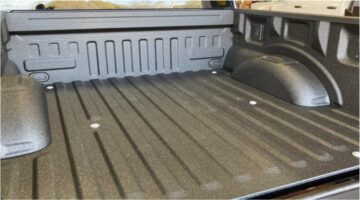The 2016 Hyundai Sonata Plug-in Hybrid will be built at the Asan, South Korea plant and will go on sale in select markets later this fall.
The 2016 Sonata Plug-in Hybrid will be available in California, Connecticut, Maine, Maryland, Massachusetts, New Jersey, New York, Oregon, Rhode Island and Vermont in 2015. Sonata Plug-in Hybrid buyers will be eligible for a $2,500 fixed federal tax credit and a variable federal tax credit based on battery capacity that will also be over $2,000. These tax credits reduce the amount of federal tax the purchaser is liable for, making them much more valuable than tax deductions. Local incentives may also be available, for example, the clean vehicle rebate in California is an additional $1,500 and Sonata Plug-in Hybrid is eligible for California’s Green Clean Air Vehicle Decals that allow access to the HOV lanes. Pricing will be announced before the Sonata Plug-in Hybrid goes on sale this Fall.
The 2016 Sonata Plug-in Hybrid features a 9.8 kWh lithium polymer battery pack, roughly five times larger than the Sonata Hybrid’s battery.
Sonata Plug-in Hybrid uses a six-speed automatic transmission with Hyundai’s Transmission-Mounted Electrical Device (TMED), a 50 kW electric motor, in place of a torque converter. The 50 kW electric motor is 32 percent more powerful than the motor used the in Sonata Hybrid and allows EV operation at higher engine load and speed. A 2.0-liter Nu four-cylinder GDI engine coupled with the electric motor allows the Sonata Plug-in Hybrid to operate just like the Sonata Hybrid once the onboard battery charge is depleted. Sonata PHEV’s Nu engine produces 154 horsepower and 140 lb. ft. of torque and the total system output is 202 horsepower at 6,000 rpm.
Sonata PHEV is expected to deliver 93 MPGe combined in EV mode based on internal estimates. In charge sustaining mode, the Sonata PHEV is expected to return 40 mpg combined based on internal testing. Recharge time ranges from less than three hours at a 240V Level-Two charging station to less than nine hours using a standard 120V outlet.
Sonata Plug-in Hybrid uses the same functional design changes as the Sonata Hybrid to improve its drag coefficient to a class-leading 0.24 as well as provide visual cues to distinguish the hybrid models from other Sonatas. Visual changes to the Plug-in Hybrid’s exterior include a charging port on the driver front fender, unique grille, front and rear bumpers, front fenders, front and rear lights, chrome side sill moldings, Hybrid badging and an eco-spoke alloy wheel design. A distinctive instrument cluster provides Plug-in Hybrid drivers with additional information about the Plug-in Hybrid’s functions. A charge indicator is located on top of the dashboard to make it easy to see the state of charge from outside the vehicle.









